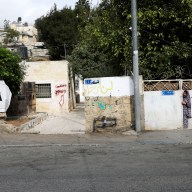 Residents of Mogadishu remove the body of female MP and former singer Sado Ali Warsame after gunmen opened fire at her car on July 23, 2014 killing her and her driver in Somalia. Credit: Getty Images
Residents of Mogadishu remove the body of female MP and former singer Sado Ali Warsame after gunmen opened fire at her car on July 23, 2014 killing her and her driver in Somalia. Credit: Getty Images
Though the 300-some Nigerian schoolgirls kidnapped by the islamist terrorist group Boko Haram in April may not be aware of it, governments around the world are closely monitoring their fate. That’s because while their abduction is alarming in itself, it also points to Boko Haram’s growing capabilities.
“It started as a sort of sect and now it’s using the same methods as al Qaeda”, notes Ambassador Smail Chergui, the African Union’s Commissioner for Peace and Security. “They’ve also received a good number of weapons smuggled from Libya. That’s a challenge the Nigerian army was not immediately prepared for.”
What’s worse: Boko Haram’s audacious acts – which include not only mass kidnappings of schoolgirls but also the killings of some 5,000 people – are only one part of Africa’s growing terrorism problem. In the East, the Somalia-based islamist group al Shabaab has lately carried out attacks in neighboring Kenya as well. In Algeria, the AQIM (al Qaeda in the Islamic Maghreb) offshoot al-Mulathamun Battalion is gaining prominence through well-executed attacks such as the 2013 raid on a gas facility. AQIM itself instils fear among local residents, government officials and expats alike through suicide bombings, kidnappings and executions. Terrorism, notes the watchdog organization Financial Action Task Force in a recent report, has travelled from the Maghreb to sub-Saharan Africa.
According to the FATF report, in 2011 Africa experienced 978 terrorist attacks, an 11.5 percent increase over 2010. Boko Haram alone carried out 136 attacks, up from 31 in 2010. In 2012 Boko Haram became more dangerous still, carrying out 364 attacks that killed 1,132 people.
Yet, report terrorism watchers, this surge in African terrorism didn’t come out of nowhere. “There’s a security vacuum in places like Libya”, notes Jennifer Giroux, a senior researcher at theCenter for Security Studies in Zurich who specialises in African terrorist groups. “There’s also been a rise in illicit activity such as drug trafficking, smuggling, and kidnap for ransom. Corrupt officials have been encouraging such activities because they financially benefit from them, thereby giving the groups space to operate and become emboldened. Over time, there has been a collusion of business interests.”
It’s impressive proceeds indeed. Endemic youth unemployment is playing into the terrorists’ hand as well. “Unemployed youth are vulnerable to these groups because joining one gives them a sense of community and ownership”, explains Giroux. “It’s not a glamorous life at all, but if you don’t have an economic livelihood it’s an attractive option.” Still, as far as member recruitment is concerned, the situation could be much worse. Notes Giroux: “Even though the bulk of youth in the Sahel and sub-Saharan Africa are unemployed, the vast majority don’t join terrorist groups.”
Last year, French and Malian troops drove AQIM away from Timbuktu, ending the group’s 10-month occupation of the ancient Malian city, and Chergui points to similar success in Somalia: “[The African Union] got 2,400 men from the UN, which allowed us to recover 12 locations from al Shabaab, including very strategic points. They’re still holding two important ports, which we’re targeting.”
Yet the real danger may be yet to come. Thousands of North Africans are fighting in Syria, and when that conflict ends, they’ll return home, hardened by battle. “We’re already thinking about how to address that situation”, says Chergui. “But we also have to deal with the root causes of terrorism, which include work and dignity.”
INFOGRAPHIC
Click graphic enlarge
 Credit: Billy Becerra, Metro
Credit: Billy Becerra, Metro













